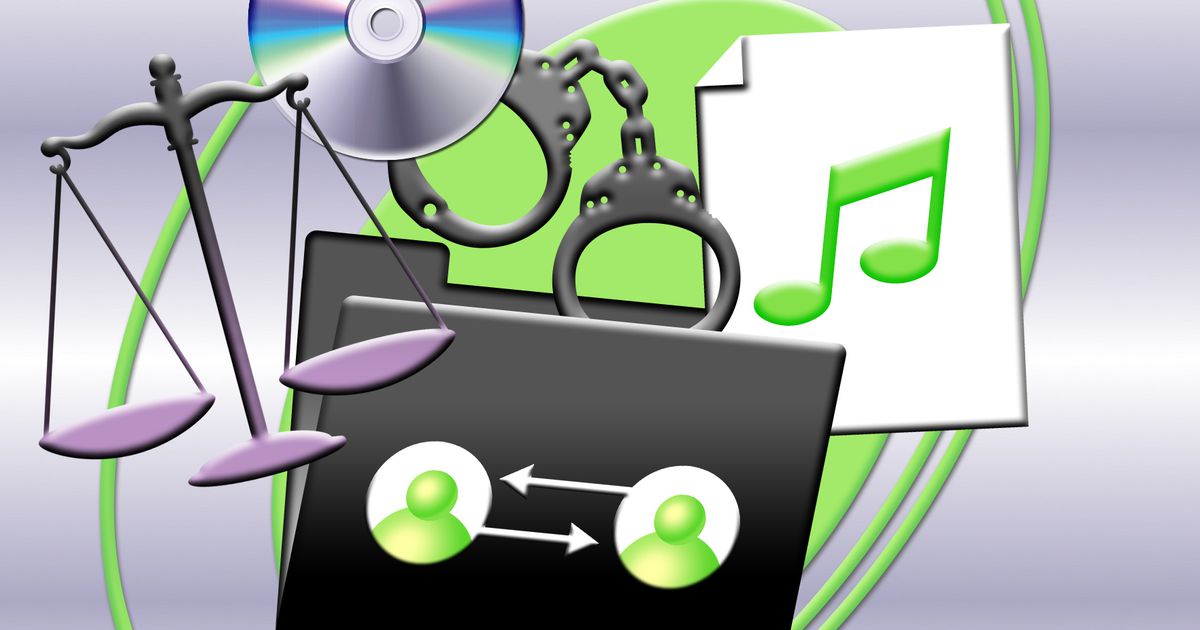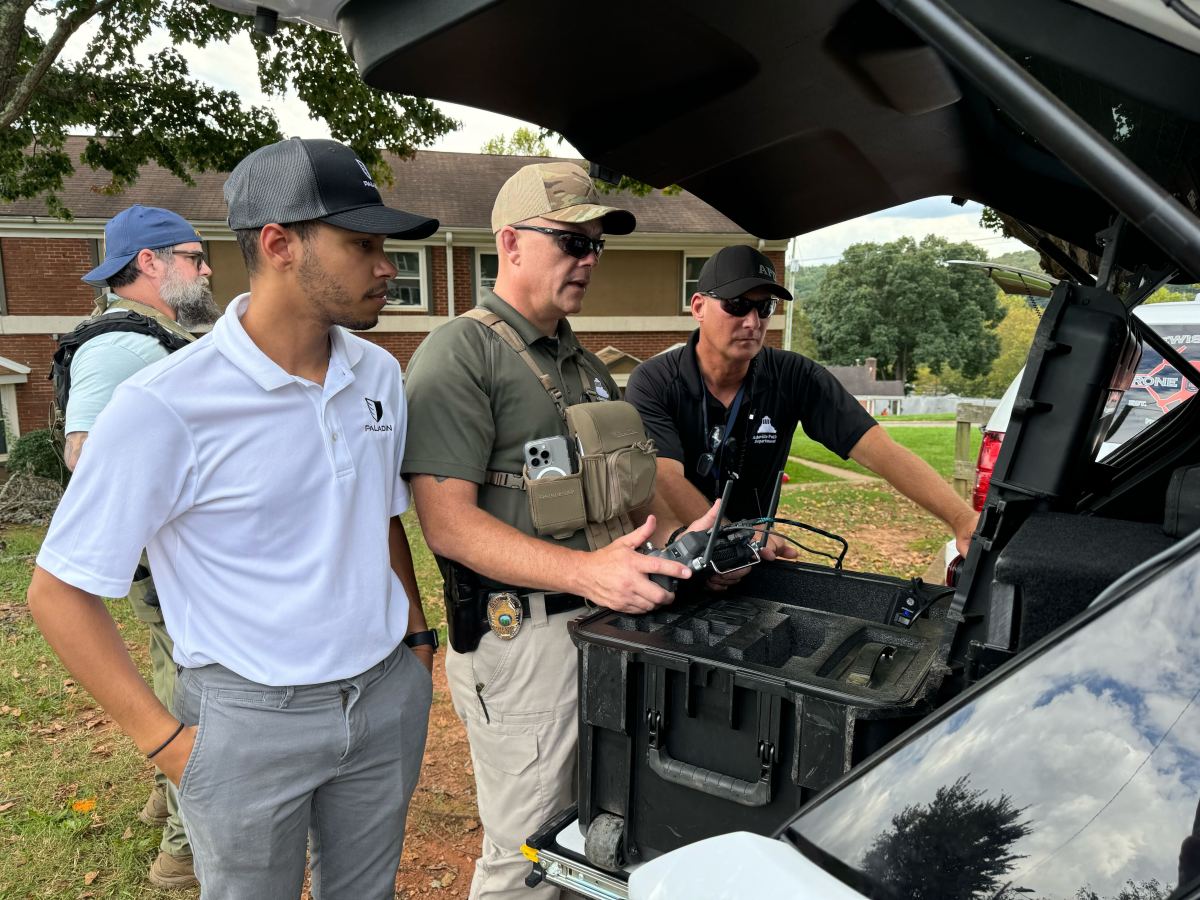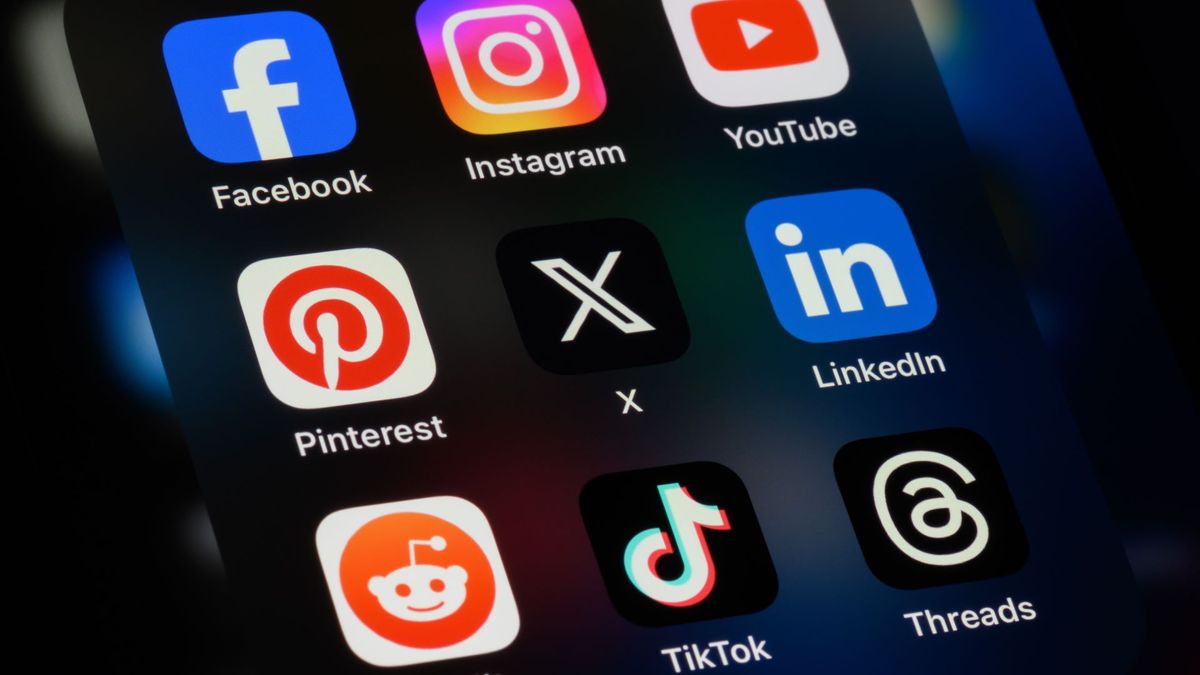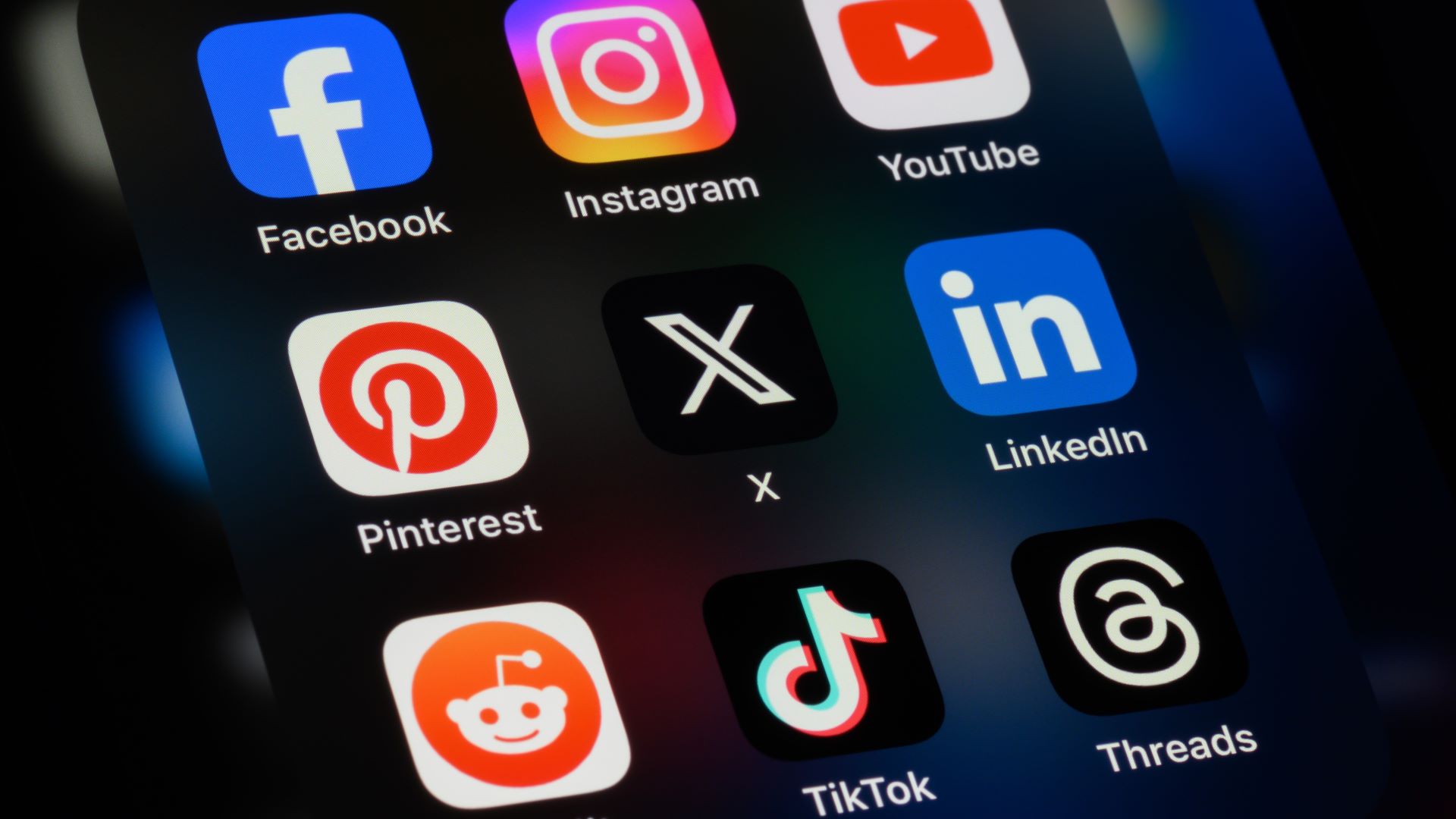ByBy the time MGM v. Grokster hit the Supreme Court, the file-sharing industry had been roiling with lawsuits for years. The record labels had sued Napster in December 1999, baptizing the oughties with a spree of copyright litigation. But the public’s appetite for piracy didn’t go away, and for every Napster that was sued into oblivion, three more sprung up in its place. Their names are now commemorated only in the court decisions that eventually destroyed them: Aimster, StreamCast, and of course, Grokster.
The Supreme Court agreed to hear the Grokster case in December 2004, and oral arguments took place in March of the following year. The copyright wars had finally arrived before the justices. The court heard first from Don Verrilli, the attorney representing a bevy of movie studios and record labels belonging to the Motion Picture Association of America and the Recording Industry of America, respectively. “Mr. Chief Justice, and may it please the Court: copyright infringement is the only commercially significant use of the Grokster and StreamCast services, and that is no accident.”
The first interruption came halfway into Verrilli’s next sentence, and the volley of questions continued before this case about peer-to-peer file sharing took a sharp turn into what, to a total outsider, might have seemed like an off-beat question: What’s the difference between file sharing and the Xerox machine?
But for those following the case from inception, this was, in fact, the Big Question. When copyright law and the internet collide, new technologies are inevitably compared to old technologies in a mix of gut-check and devil’s advocacy. A Xerox enables copying — often of copyrighted works! — on a mass scale. So do the VCR and the iPod. “Are you sure that you could recommend to the iPod inventor that he could go ahead and have an iPod or, for that matter, Gutenberg, the press?” Justice Stephen Breyer asked Verrilli. And then, in one of those mischievous asides that he was known for, Breyer added, “For all I know, the monks had a fit when Gutenberg made his press.” (The audience tittered in polite, pandering laughter.)
The iPod would come up again and again throughout oral arguments. Though portable MP3 players had been around for a while, Apple’s version had taken the world by storm, in part because of its sleek design and high capacity and in part because it was conveniently linked to the iTunes Store, a legitimate system for buying music digitally. Yet, the hard drive space was a nod to the enormous digital libraries people could potentially acquire — or even had already accrued — through piracy.
And they didn’t mince around what was happening across the country. “I know perfectly well I could go out and buy a CD and put it on my iPod,” said Justice David Souter. “But I also know perfectly well that if I can get the music on the iPod without buying the CD, that’s what I’m going to do.” If that was the case, and the RIAA got its way, wouldn’t the threat of copyright litigation be hanging over some future Steve Jobs or Jony Ive?
“I don’t actually think that there is evidence that you’ve got overwhelming infringing use,” Verrilli began to reply. Sure, people were using the iPod to infringe copyright, but it wasn’t with the same consistency as for a file-sharing client, right? But before Verrilli could finish that train of thought, Souter interrupted again.
“Well, there’s never evidence at the time the guy is sitting in the garage figuring out whether to invent the iPod or not.”
There was an implicit assumption on all sides that the iPod was legal, that the iPod was legitimate, that the iPod was worth protecting. The justices fretted that letting the file-sharing services win would destroy the music industry; but on the other hand, if they let the MPAA and RIAA win, it would destroy the iPod.
Meanwhile, Justice Ruth Bader Ginsburg, a known copyright maximalist, reserved her gotchas for the other side, lobbing them straight at Richard G. Taranto, who was representing the file-sharing companies. “You don’t question that this service does facilitate copying.”
“As does the personal computer and the modem and the internet service provider and the Microsoft operating system,” Taranto replied smoothly.
That is, of course, more or less the rub: if the Xerox machine is somewhat of a troubling invention, everything about our modern-day computer-rich ecosystem is a thousand times worse. My phone syncs to my tablet, syncs to my laptop; the value proposition of every device on my person is that it instantaneously and unquestioningly shares copies — of text, pictures, audio, video — with other devices and other people. A website is a thousand, million, billion copies served up to different people at different times. Copies are downloaded to devices, uploaded to servers, linger, and then vanish again while in transit. There is a fundamental mismatch between the post-internet era and the very foundation of copyright law, and a hundred strange little tweaks and twists and exceptions have had to be made to make square pegs fit into round holes.
Grokster is the story of one of those exceptions.
The Supreme Court would ultimately decide Grokster in favor of Hollywood and the record labels, but without fully adopting their reasoning. And in the court’s strenuous efforts to walk that fine line between the iPod and the RIAA, it shamelessly made up an entire copyright law doctrine without batting an eye, a theory of liability that hadn’t existed up until that point in time.
Copyright law had been one thing in 2004. It was a completely different thing in 2005 and beyond.

InIn all fairness to the Supreme Court of 2004, it had waded into the legal version of a forum flame war. In every courtroom, lawyers act out hostilities as a form of theater. But for some reason, the copyright wars really were as hostile as they seemed on the outside.
“I would say there was really a battle going on between Hollywood and Silicon Valley,” recalled Mark Lemley, a law professor at Stanford and longtime litigator who, in 2003, won the Grokster case in the lower court. “And you saw it in lots of different places.”
The Digital Millennium Copyright Act (DMCA) had been passed only a few years prior. For tech industry lawyers and internet freedom types at the time, the passage of the DMCA — with its legal restrictions on bypassing DRM and its loophole-riddled safe harbor regime which allowed platforms to evade liability for hosting copyrighted material so long as they took it down upon notice — was a crushing defeat. The file-sharing lawsuits were part of the same war, merely fought on different grounds.
“I think each side really did think that this was existential, that the other side is going to destroy us,” said Lemley. “One side said, ‘The copyright industry wants to eliminate digital technologies,’ and the copyright industry said, ‘We’re not going to survive, creativity is not going to survive, if everybody could just get this stuff for free.’ And so everybody felt like this was it, right? This was for all the marbles.”
The record labels had sued the makers of the Rio MP3 player in RIAA v. Diamond and had lost. The Diamond decision even contains a few lines that suggest that it’s fair use to rip a store-bought CD into a digital format. (Believe it or not, that’s something that has still never been definitively settled in a court of law, although Justice Souter got the RIAA’s Verrilli to say it was fine during the Grokster oral arguments at the Supreme Court.)
The RIAA’s lawyers were mostly winning their battles against the peer-to-peer file-sharing services, but they were losing the war. The hottest new gadgets were riding on the back of music piracy, and the better that computers and internet speeds got, the easier piracy became. Successive iterations on Napster emerged — some were tech companies backed by venture capital; others, like the Pirate Bay, founded in 2003, were practically ideological.
People simply would not stop pirating music. The industry’s next move reeked of desperation: in 2003, the labels moved on to suing individual downloaders.
The idea was to scare people straight, but in many respects, this was a disastrous strategy. The PR fallout was enormous. Unable to perfectly identify defendants based on their IP addresses, the RIAA’s hit rate was, to say the least, extremely problematic. Parents were being sued for what their underage kids had done on the family computer. Stories about little old grandmas getting lawsuits mistakenly thrown at them were ubiquitous in the headlines. Even the artists that publicly backed the RIAA suits — like Metallica — were roundly mocked and despised by their own fans for doing so.
The labels, on some level, had to know that it was not the best idea. After all, they only resorted to suing normal people after they tried suing file-sharing services and MP3 player manufacturers. These people, depending on your angle, might be called users, pirates, fans, or downloaders. They were often young teenagers; when they weren’t minors, they were frequently college students who had, after moving into their dormitories, accessed high-speed internet for the first time. In the court of public opinion, these kids were collateral damage in the copyright war between “the tech industry” and “the content industry.” But in a court of law, the kids were the real perps in a multibillion-dollar crisis of copyright infringement.
The file-sharing services were technology companies, and the technology on its own was not illegal. The peer-to-peer file-sharing services were selling software; they weren’t even hosting the content. And the newest generation of services weren’t hosting a central database to search for content, the way that Napster did.
All sorts of new tech — like VCRs and Xerox machines — have undergone periods of copyright anxiety before coming out the other side. They became established as legitimate innovations that sometimes get used for copyright infringement. In fact, in the case of the VCR, a seminal 1984 Supreme Court decision had smoothed things along.
The RIAA might have defeated Napster in court, but the recording industry’s case was never ironclad. Each new iteration on Napster became another opportunity to hash the principle out in court. To what degree could the technology be held liable for the copyright infringement of the users? It was only a matter of time before someone showed up and finally scored a win against the labels.

WhenWhen the Grokster and StreamCast cases went up on appeal together, it was Fred von Lohmann of the Electronic Frontier Foundation, a persistent thorn in the side of the RIAA, who argued them before the Ninth Circuit. The appeals court gave the win to the file-sharing services; shortly after, in December 2004, the Supreme Court granted certiorari, agreeing to hear the case.
Lemley remembered feeling both nervous and cautiously optimistic. The Ninth Circuit had made a well-reasoned and articulate extrapolation from Sony v. Universal City Studios, the 1984 Supreme Court case lawyers often refer to simply as “Betamax,” since both Sony and Universal are frequent fliers in the legal system. The case established that Sony itself was not infringing copyright by selling VCRs, even though many VCR owners were copying television programs at home. Sony’s Betamax tapes might be remembered as the also-ran format of VHS, but its name lived on in this legal precedent two decades later.
Beyond that, said Lemley, even if almost all the content on Napster was copyright infringement, that wasn’t necessarily the case in Grokster. The plaintiffs who had filed suit in the Grokster and StreamCast cases represented more or less every record label and motion picture studio in America. When lined up one after another, their names sprawl across multiple pages of the frontispiece of the Ninth Circuit decision. Still, they had only been able to allege that 70 percent of the content being shared on these services belonged to them, though they estimated that 90 percent infringed someone’s copyright.
And that mattered. Ten percent, said Lemley, should be enough to support the idea that Grokster had “substantial non-infringing uses,” which was the legal standard set in the Betamax case. A footnote in the Betamax decision even suggests that it was enough that 7.3 percent of the time, consumers were not violating copyright law.
7.3 percent? That was barely anything. The file-sharing services had a whopping 10 percent going for them.
Still, said Lemley, there was also good reason to be nervous. The procedural background was slightly alarming (for the Supreme Court aficionados: when the court granted cert, there was, at most, a “shallow circuit split” in the case; arguably, there was no split at all). And the case was coming out of the Ninth Circuit, an appellate court that SCOTUS notoriously loves to reverse.
The Supreme Court, too, is just a different animal altogether. Theoretically, SCOTUS is only a notch above the federal appeals courts. But that single ladder rung separates the rest of the legal system with a moat of bizarre customs, foibles, and etiquettes. The bar of attorneys admitted to practice in the Supreme Court is an exclusive one, and within that bar is an even more exclusive group of people who regularly argue in front of it, an elite priesthood that panders to nine robed gods on a raised dais in a theatrically lit room.
The file-sharing companies did not have the deep pockets for one of these private sector big guns, and so their EFF lawyer Lohmann was slated to argue the case before the justices. But in the end, billionaire Mark Cuban ponied up the cash to pay for Richard Taranto, who had been arguing in front of that court for 20 years. (“I did it because I thought the music industry was being heavy handed with IP and Grokster was the underdog,” Cuban wrote The Verge in an email. “Beyond that I don’t remember anything.”)
“I’ll admit I was a little bit disappointed,” said von Lohmann. But going with the specialist — now that there was money to pay him — made sense. “Basically, arguing in front of the Supreme Court is like being a therapist to those nine people. It’s not just about the law. It’s also about knowing what the justices’ pet hobby horses are and what things trigger them and what their alliances and animosities are.”
And von Lohmann, an early adopter and internet nerd who had fallen in love with digital copyright law after reading an article in an early issue of Wired, was not quite the vibe for this scene. The day that Grokster was heard in the Supreme Court was a momentous one — in addition to changing copyright law forever, the oral argument right before Grokster was for Brand X, the case on which modern-day net neutrality rests.
Yet, on that day, the press gallery was abuzz, fixated on something else: Fred von Lohmann had a ponytail. No one could remember another time that a male lawyer with long hair had shown up in front of the justices.
The Ninth Circuit, where von Lohmann had argued and won the case before it came to the Supreme Court, had not cared about his ponytail.
But von Lohmann would hear about all that later. In the moment, he was focused on what he thought was the moment that the internet was going to get a clear rule. The Ninth Circuit had interpreted Betamax to protect the file-sharing companies. The RIAA and MPAA were never going to leave that precedent alone; the technology industry and the EFF and Mark Cuban, too, were not going to leave this issue alone, either. No matter who won or lost, the Supreme Court had to settle the principle once and for all.
Except it didn’t. “In some ways, it’s so disappointing that the Supreme Court did not give us an answer,” said von Lohmann. “Rather than deciding ‘Is Betamax still the foundation of the technology sector?’ they sort of punted that question and answered a different question.”

Grokster is a strange SCOTUS precedent because honestly, it doesn’t make a whole lot of sense. The decision created a new form of liability known as “inducement”: the technology companies, the court ruled, had seduced the users — the teens, the kids, the fans, the pirates — into infringing copyright. It didn’t matter that these services never hosted any files or made a central index.
Some of the evidence the court cites is kind of weird. For instance, StreamCast had distributed a program called “OpenNap” and had run ads for it with Napster-compatible programs. Grokster had it even worse — the connection to Napster was in its own damn name! “[A]nyone whose Napster or free file-sharing searches turned up a link to Grokster would have understood Grokster to be offering the same file-sharing ability as Napster; that would also have been the understanding of anyone offered Grokster’s suggestively named Swaptor software, its version of OpenNap,” read the SCOTUS opinion.
The primary takeaway of Grokster is “don’t look like Napster,” written in such vague terms that liability seems to loom over much of the tech industry. Okay, so, don’t start a company with a name ending in -ster. But now what? Who would be deemed the next Napster? How do you avoid looking like them? How do you even know what the next Napster is? What does it mean to not look like you’re courting customers who may or may not infringe copyright? A device that streams TV broadcasts to your laptop, a website for uploading mix tracks, an image host that markets itself as dedicated to memes and viral content — where do they stand? The decision didn’t overturn Sony v. Universal, but Betamax was no longer the reliable precedent it once was. “Most honest copyright lawyers would tell you that the value of Betamax in protecting technology vendors has been eroded in the years since Grokster was decided,” said von Lohmann.
Copyright law is deeply punitive. Unlike most other torts, the rights holder doesn’t need to show that they were harmed; the statute allows a judge to levy up to $150,000 in statutory damages per infringed work. (That’s in extreme, “willful” cases, as the recording industry believed Napster was. In normal cases, statutory damages are supposed to range from $750 to $30,000 per work.) If a user base is consuming millions of songs or movies or pictures via a service, that’s more money than most national GDPs. In practice, no tech company ever gets hit with a trillion-dollar copyright judgment, but the theoretical risk is still enough to give pause.
In its immediate wake, Grokster seemed to hang over the industry like a sword. It came as a particular shock to Lemley, who had sailed away on a vacation to the Arctic Circle with no satellite service just hours before the Supreme Court decision came down — two weeks later, he became the last of the lawyers in the suit to find out what had happened to his case.
“I don’t think Grokster made file sharing go away,” said Lemley. “But I do think it changed the legal landscape and made it more challenging to be a high-profile tech company that was in the business of digital content transmission. I think a bunch of folks just went out of business.”
Ultimately, Grokster would shut down in 2005; StreamCast Networks filed for bankruptcy in 2008.
The public’s perception of downloading, too, made a radical shift. “The legal campaign, the lawsuits against individuals, the media coverage — the cases actually made change,” said von Lohmann. Until the RIAA launched what seemed at the time to be a futile war against piracy, nobody took individual piracy seriously. “When I was a kid, like, nobody ever thought twice about, ‘Oh, can I borrow that album? I’ll tape it at home.’”
But he witnessed the shift in attitudes personally while on the front lines of the copyright wars. “During that period, when you did surveys, it became increasingly difficult to actually get a read on how widespread file sharing was because, between 1999 and 2005, everybody started lying about it,” said von Lohmann. It had gone from something uncontroversial to something like smoking weed. Everyone did it. Everyone knew that everyone else did it. Nevertheless, you weren’t supposed to admit it.

BeforeBefore that shift in public perception, for the true fans, file sharing was just a means that the record labels were not providing. The fans wanted to listen to everything, to have a real choice of favorite artist before buying concert tickets and merch, to be able to consume an entire back catalog. Fans wanted digital music. They wanted easy access to music. They wanted lightweight and portable MP3 players. They also, indisputably, loved free shit. Not every downloader is a fan, and not every fan is circulating money back into the creative economy.
The music industry thought that freeloading tech companies would destroy them, and the tech companies thought that the music industry’s overzealous copyright lawyers would, in turn, destroy them.
But then things just sort of settled down. Steve Jobs introduced the iTunes Music Store in 2003 with explicit comparisons to file-sharing services, and it was already proving its economic potential. Spotify was founded in Sweden the year after the Grokster decision came out. The content industry and the tech industry were no longer in a deathmatch to destroy the other. Licensing was making the money flow again. Beyond that, people now had “a simple and not that expensive way to get music legally,” said Lemley. “And that, I think, causes a bunch of people to just sort of stop using file sharing. It doesn’t go away. But it just becomes, you know, what I wanted, which is the ability to play music on my devices.”
It turned out, as well, that the DMCA — the law that Silicon Valley had seen as a terrible defeat — ended up becoming much more important than anyone had thought it would. The spooky uncertainty of Grokster drove platforms straight into the arms of the DMCA safe harbor provision, which kept the copyright lawyers away so long as they were given bureaucratic systems which allowed notices of infringement to be sent and content to be taken down. Over the next few years, the case law and precedents around the DMCA would accumulate into a robust body of law through which much of the internet survived and even thrived. The world we currently inhabit, in which your Instagram posts get flagged, your favorite Twitch streamers get temporarily banned, and every YouTuber understands that a copyright strike is a nuclear weapon, is one that came to life after 2004.
Relations have since thawed between the tech industry and the content industry — if relations are not exactly amicable, they are, at least, inflected with a sense of normalcy.
Consider how much the issue of AI and copyright continues to inflame the public imagination, and yet, rather than launching a unified war, some media companies have sued, while other media companies — including The Verge’s parent company Vox Media — have chosen to simply cut deals with the likes of OpenAI. Copyright is not a crusade; copyright is business as usual.

ForFor many readers, this is all a nostalgic backdrop to a story they may or may not have heard in some iteration or another. And yet, a not-insignificant number of people are reading these words in the year 2024 and scratching their heads.
“In an era where we all just take Spotify for granted, people don’t remember what it was like when every CD cost you like 10 dollars,” said Fred von Lohmann. “Your personal CD collection was a tiny window on the world of music, like a very carefully selected curated slice of the universe of music. And Napster changed that overnight. And suddenly, you could be like, I can listen to obscure reggae. And then I can listen to electropop, and then I can listen to The Beatles.”
For von Lohmann, the advent of file sharing was akin to the moment The Wizard of Oz goes from black-and-white to color. “I would still argue in some ways, we still don’t have it as good now as fans as we did with Napster in ’99,” said von Lohmann. “There’s still a lot of stuff that you can’t get that was available — like live recordings and rarities and bootlegs and stuff that will never be on Spotify.”
But the difference between now and the 1990s is still stark. Napster and the MP3 players that rode the wave of file sharing — the Rio, the Zen, the iPod — changed everything about how we listen to and relate to music. Digital files are no longer the secondary backups of our physical libraries, an echo of “the real thing” made for convenient transport. Music is digital-first; the vinyls and the CDs are secondary — for many, they are merely mementos. And technology has also changed the economic incentives around music, cratering the revenues generated through the major labels and pushing musicians to seek out alternative revenue sources.
Music, today, is not about copies — it is about streaming. It exists as a choice between platforms — Spotify, Apple Music, and so forth. The number of plays is the coin of the realm.
A song is a vibe, the backdrop of a TikTok, a meme waiting to happen, a copyright bomb that can nuke a livestream. An MP3 is a perplexing fossil. A physical CD is a limited-edition collectible.
Of the nine justices who heard Grokster, only one still sits on the court (Clarence Thomas). Verrilli, who represented the studios and labels, went on to become solicitor general of the United States; today, he is back to arguing Supreme Court cases in the private sector. Taranto, the lawyer that Mark Cuban paid for, sits as an appeals court judge on the Federal Circuit.
After leaving the EFF, Fred von Lohmann went on to work for Google — he would be there during the latter half of the tortuously elongated Google Books copyright litigation, the landmark DMCA precedent set by YouTube’s victory against Viacom in the Second Circuit, and the unending software copyright shitshow that was Oracle v. Google. He is now legal counsel at OpenAI, which is currently besieged with its own thicket of copyright lawsuits; he declined to talk about AI and copyright with me, asking to stick to the topic of a yesteryear long gone by.
Grokster and StreamCast are dead. Even the iPod is no longer in production. They are buried and gone, like the Betamax and the Betamax “substantial non-infringing uses” standard — all relics of a bygone era, the ephemera of 2004. Copyright law barely made sense then. As you might suspect, 20 years later, it makes even less sense now.



















































































































































You must be logged in to post a comment Login